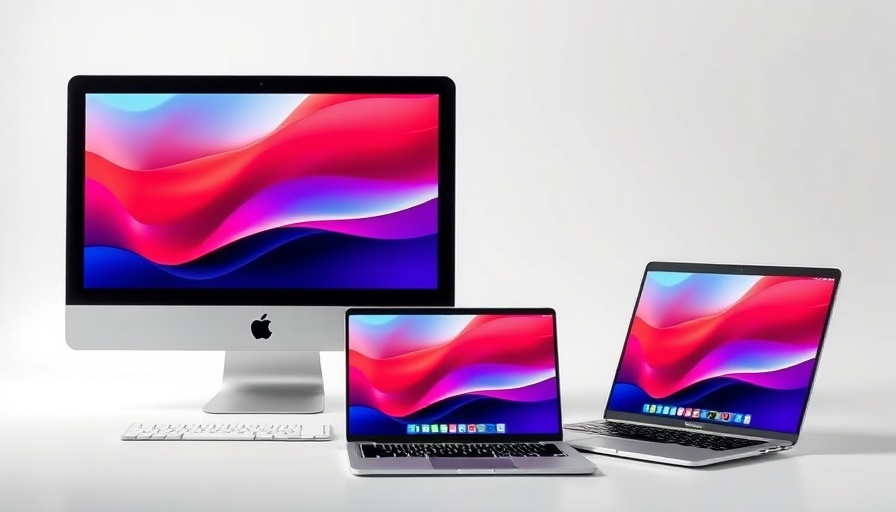
The Transition to Apple Silicon: A Historical Perspective
Apple's move from Intel processors to its own Silicon chips marks a pivotal moment in the history of computing. This transition began in 2020, with the introduction of the M1 chip, showcasing significant advancements in performance and battery efficiency. The gradual phasing out of Intel-based Macs signals not only a technological shift but also illustrates Apple’s commitment to integrated hardware and software solutions.
The Final Call for Intel Macs
As macOS Tahoe sets to launch later this year, it is vital to comprehend what this means for existing Intel Mac users. This final version will support select Intel models, including the MacBook Pro and iMac from 2019 and later. However, essential features that leverage Apple Intelligence will remain exclusive to Apple Silicon. Even with security updates continuing for three more years, the core message is clear: the time has come to transition away from Intel Macs.
Evaluating the Impact on Businesses
For businesses still utilizing Intel-based Macs, this transition raises questions about strategy and investment. With security patches guaranteed, companies can take a measured approach to upgrade. However, the real cost may come from operational inefficiencies and the inability to access newer capabilities that Apple Silicon will continue to deliver. Leaders must weigh their options carefully and consider the long-term benefits of adopting newer technology.
Key Decisions for Technology Executives
Executives must evaluate the role of technology in their business strategies actively. Investing in Apple Silicon devices could mean better performance, enhanced security, and access to future updates and features. The transition signals the importance of agility in tech infrastructure. Leaders should look to identify potential impacts on productivity and workflow, integrating the latest technology to align with their business objectives.
Anthropocentric Shift in Technology Adoption
This technological evolution invites a broader conversation about human-centric design in technology. As the Intel Macs are phased out, the focus will shift towards products that align with modern computational needs. The need for personalized solutions will grow, paving the way for devices that enhance user experience while maximizing performance and security. This paradigm shift is unfolding across industries, urging businesses to adapt their technology strategies accordingly.
What's Next? Future Innovations on the Horizon
As Apple moves beyond Intel, the tech community anticipates innovations in hardware-software integration. The company’s forward-thinking approach encourages developers to create native applications optimized for Apple Silicon. This will inspire new software development that enhances the user experience and efficiency—a clear indication for businesses to remain attentive to upcoming changes and adjust their strategies timely.
Conclusion: A Call for Adaptation in Technology Strategy
Given the impending end of support for Intel Macs, businesses should proactively assess their tech landscape. Transitioning to Apple Silicon devices not only positions organizations for current operational needs but also aligns them with the future of technology. Now is the time to strategically invest in tools that drive innovation and productivity in an increasingly digital world.
 Add Row
Add Row  Add
Add 




Write A Comment